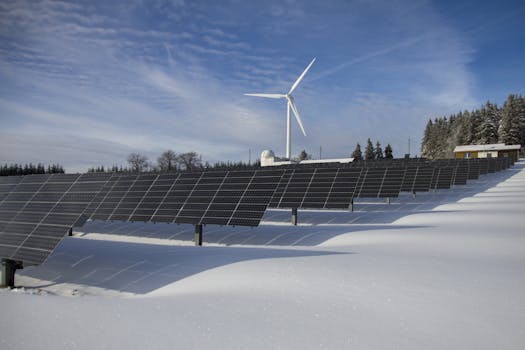Introduction to Photovoltaic Paint
As the world grapples with the pressing need for sustainable energy solutions, innovative technologies are emerging to harness renewable resources more effectively. One such groundbreaking development is photovoltaic paint, a revolutionary concept that allows any surface to function as a solar power generator. This article delves into the science behind photovoltaic paint, its applications, benefits, and the future it promises for energy generation.
What is Photovoltaic Paint?
Photovoltaic paint is a type of coating that incorporates solar cells, enabling surfaces to convert sunlight into electricity. Unlike traditional solar panels, which require specific installations and space, photovoltaic paint can be applied to various surfaces, including walls, roofs, and even vehicles. This technology utilizes nanomaterials and organic photovoltaic cells to achieve energy conversion.
The Science Behind Photovoltaic Paint
The core principle of photovoltaic paint lies in the photovoltaic effect, where certain materials generate electric current when exposed to light. The paint contains microscopic solar cells that capture sunlight and convert it into usable energy. The process involves several key components:
- Nanomaterials: These materials enhance the efficiency of light absorption and energy conversion.
- Conductive Polymers: These are used to create a conductive pathway for the generated electricity.
- Binding Agents: These ensure that the paint adheres well to surfaces while maintaining its photovoltaic properties.
Applications of Photovoltaic Paint
The versatility of photovoltaic paint opens up a myriad of applications across various sectors:
- Residential Buildings: Homeowners can apply photovoltaic paint to roofs and walls, reducing reliance on traditional energy sources.
- Commercial Properties: Businesses can integrate this technology into their buildings, leading to significant cost savings on energy bills.
- Vehicles: Cars and buses can be coated with photovoltaic paint, allowing them to generate power while parked or in motion.
- Infrastructure: Public structures like bridges and bus stops can be equipped with this technology to power lighting and other systems.
Benefits of Photovoltaic Paint
The advantages of using photovoltaic paint are numerous and compelling:
- Cost-Effective: It reduces the need for expensive solar panel installations and can be applied during regular painting jobs.
- Space-Saving: Photovoltaic paint can be applied to existing surfaces, maximizing energy generation without requiring additional space.
- Versatility: It can be used on various surfaces, including unconventional ones, expanding the potential for energy generation.
- Environmental Impact: By harnessing solar energy, it contributes to reducing carbon footprints and promoting sustainability.
Case Studies and Real-World Examples
Several projects around the world have successfully implemented photovoltaic paint, showcasing its potential:
- University of California, Los Angeles (UCLA): Researchers developed a photovoltaic paint that can be applied to walls, generating electricity for campus buildings.
- Solar Roadways Project: This initiative aims to create solar-powered roads using photovoltaic materials, demonstrating the potential for infrastructure applications.
- Car Manufacturers: Companies like Tesla are exploring the use of photovoltaic paint on their vehicles to enhance energy efficiency.
Challenges and Future Prospects
Despite its promising potential, photovoltaic paint faces several challenges:
- Efficiency: Current versions of photovoltaic paint are less efficient than traditional solar panels, necessitating further research and development.
- Durability: The longevity of the paint under various environmental conditions is still being tested.
- Cost of Production: While it may reduce installation costs, the production of high-quality photovoltaic paint can be expensive.
However, ongoing advancements in nanotechnology and materials science are expected to enhance the efficiency and affordability of photovoltaic paint, making it a viable option for widespread adoption in the near future.
Conclusion
Photovoltaic paint represents a significant leap forward in the quest for sustainable energy solutions. By transforming any surface into a solar power generator, it offers a unique and versatile approach to harnessing renewable energy. As technology continues to evolve, the potential applications and benefits of photovoltaic paint will likely expand, paving the way for a greener and more energy-efficient future. Embracing such innovations is crucial as we strive to meet the growing energy demands while minimizing our environmental impact.
